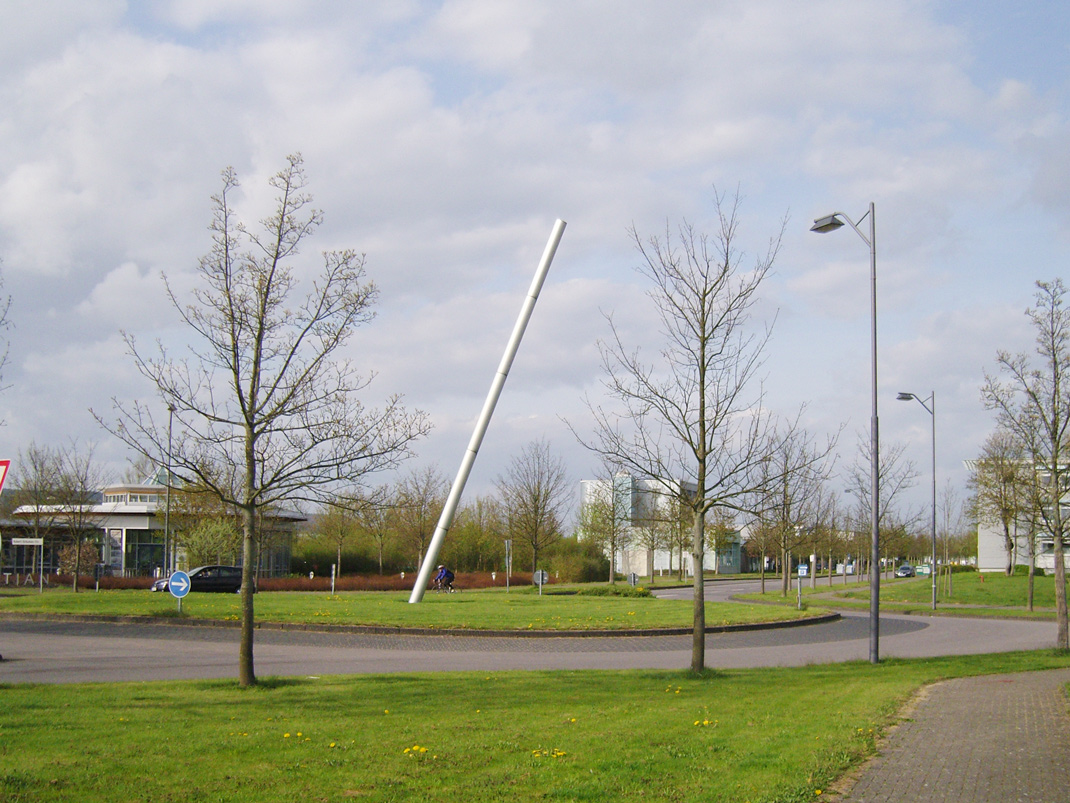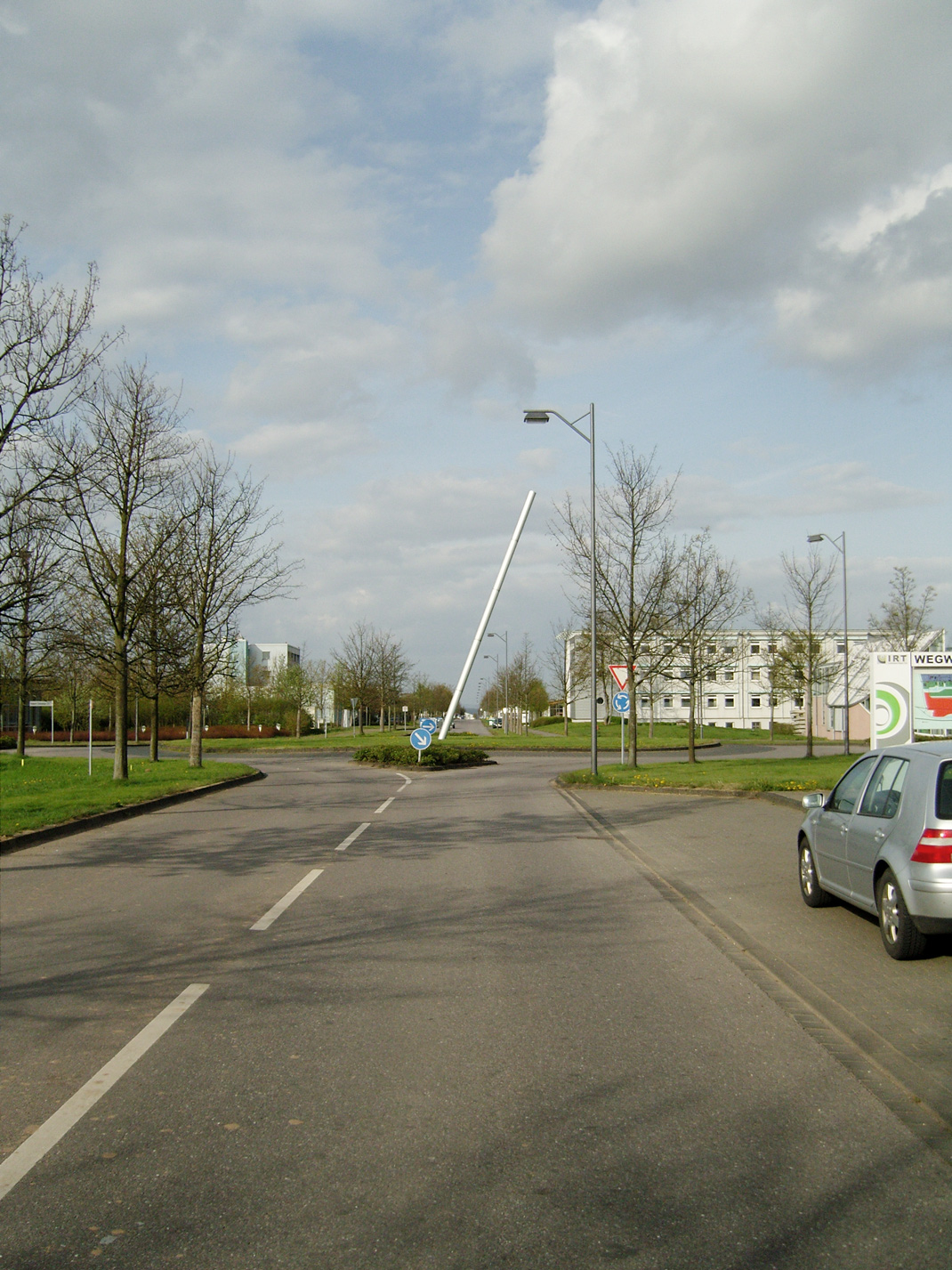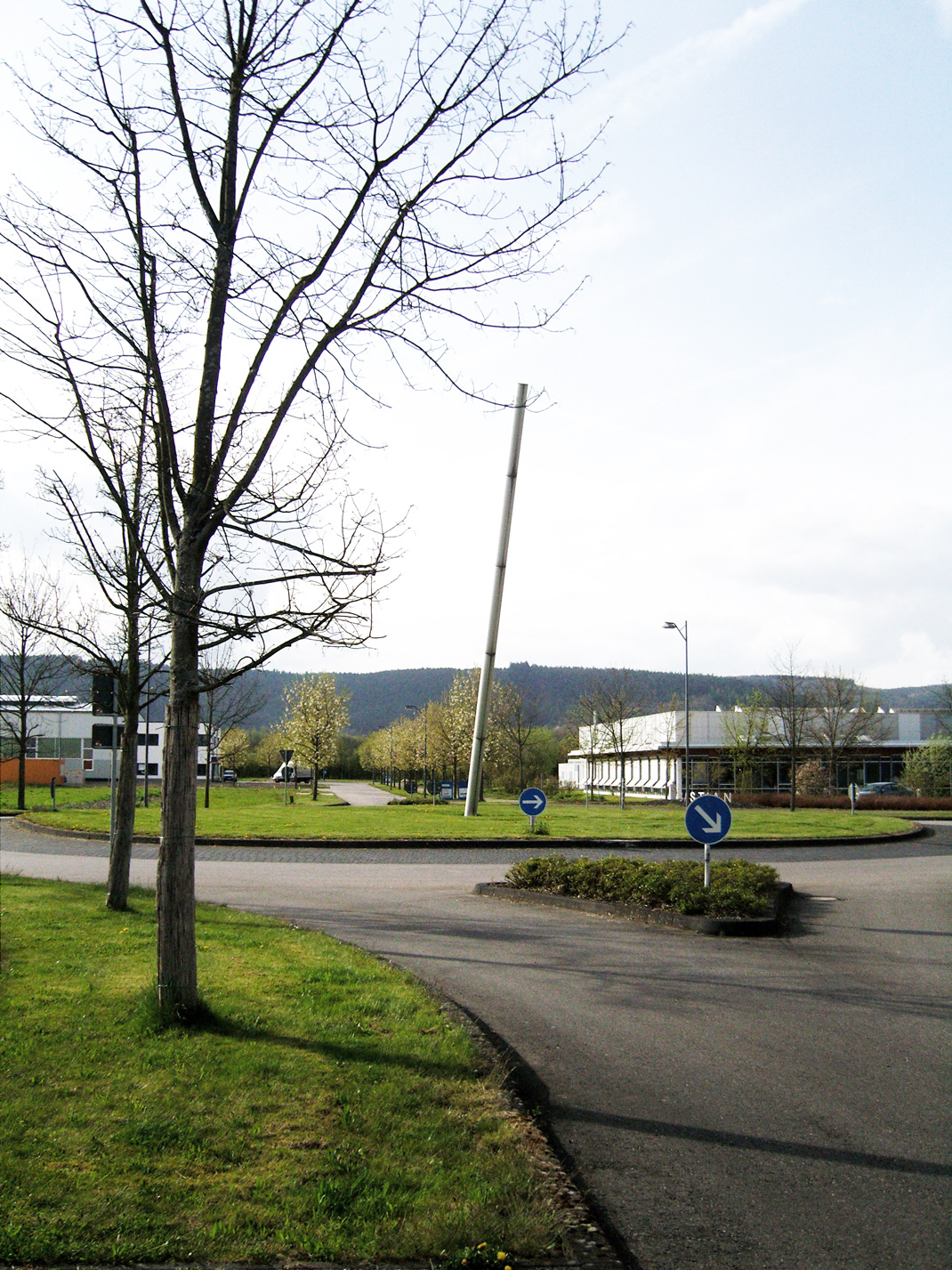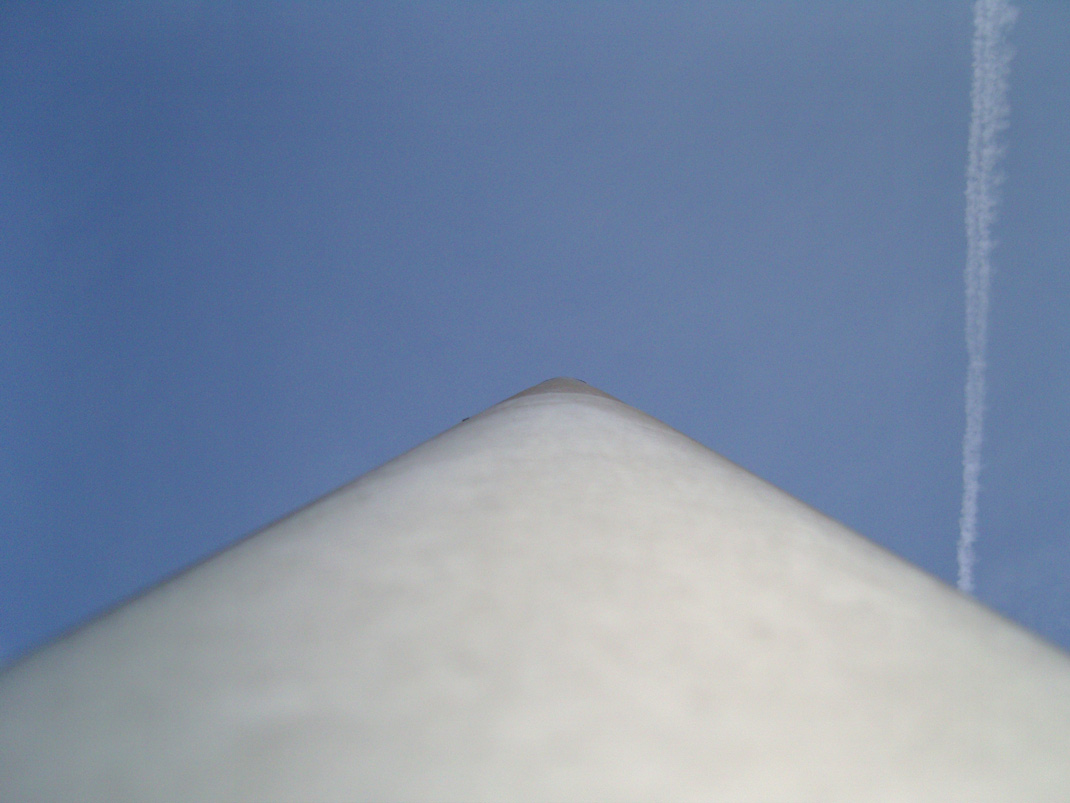Thomas Rauscher
The Stele
central supporting steel tube, tubular sleeves made of anodized aluminum
height 12m, diameter 40 cm
1998

This public artwork was conceived as part of a university project. Several students were tasked by the management of a local industrial park near Trier to develop ideas for an artwork. The piece was to be situated in the central roundabout of the park, serving as a potential landmark and a strong visual identifier.

After much deliberation and discarded ideas, I revisited the informational brochure provided to seek inspiration. The word „center“ appeared frequently—the industrial park’s topographical location, its importance to the local industry, the gathering of various businesses in one area, etc. With this insight and the location of the artwork, the roundabout, I decided to explore the concept of „center“ in my design.

From there, it was relatively straightforward—I conducted an etymological research of the term „center“:
From Middle High German „zenter“ → Middle High German, in the 13th century from Latin „centrum“ → Latin, „middle point, axis point, hub,“ from Ancient Greek κέντρον (kentron) → Ancient Greek, „center of a circle,“ originally „pointed stick (fixed leg of a compass), thorn“; from an Indo-European root *kent-, „to pierce“.
Based on this, I decided to conceive the roundabout’s island as a circle from whose center a fixed leg of a compass rises. This leg should be so high that it can be seen from afar when approaching the roundabout, and through a slight twist out of the street axes, it shows its slant from everywhere. I chose a height of 12 meters to rise above the neighboring buildings. Its slant resulted purely from geometry, by considering the inner edge of the roundabout’s island as a circle that this compass draws.
This idea was realized and functions almost as a super-sign—clear, simple, and concise.

